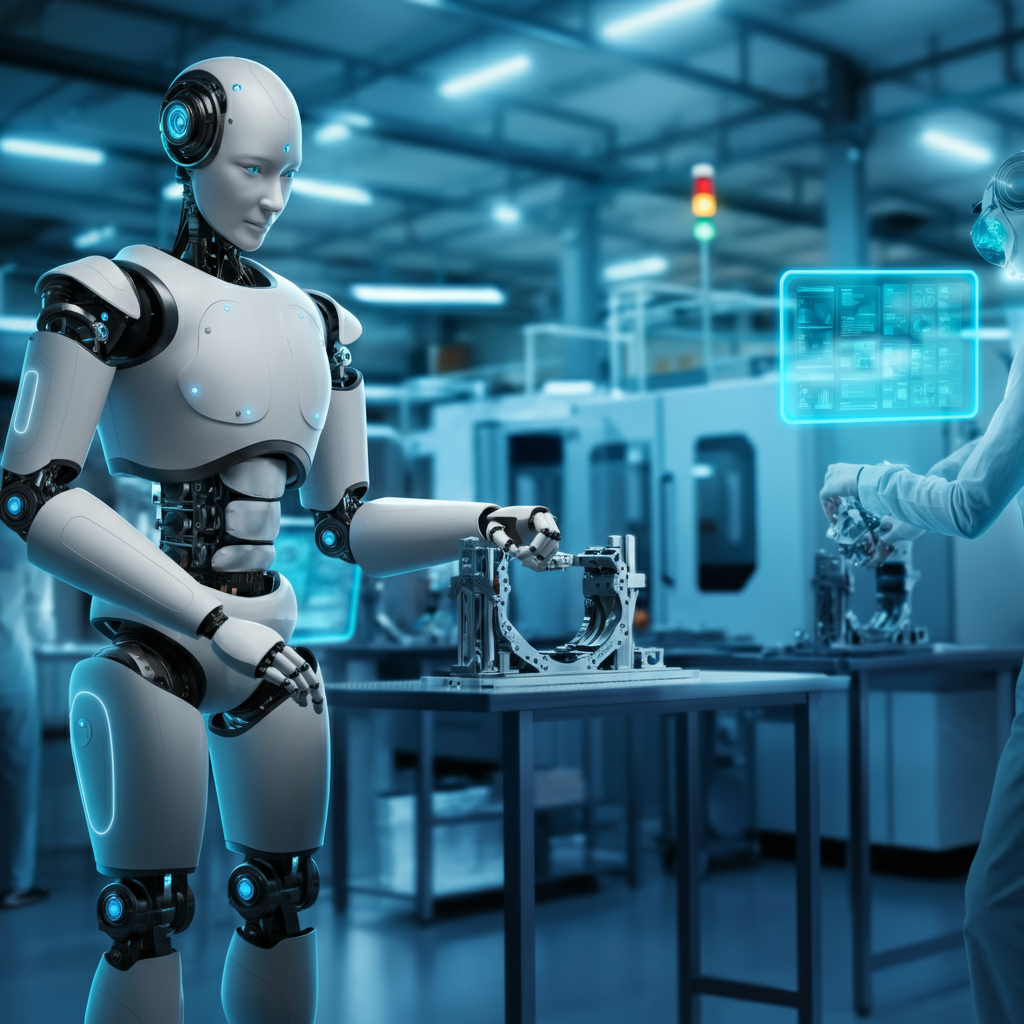
The world of artificial intelligence moves at a breakneck pace. What was science fiction yesterday is today’s reality. As we approach the end of 2025, the AI landscape has evolved in ways that are reshaping industries, daily life, and even our understanding of creativity and autonomy. From hyper-realistic generative models to smarter autonomous systems, let’s explore the most significant AI breakthroughs and the important conversations they’re starting.
This post will cover the latest advancements that matter. We’ll look at the new frontiers of generative AI, the progress in vehicles and robots that operate on their own, and the crucial ethical discussions guiding AI’s future.
The New Wave of Generative AI
Generative AI captured the public’s imagination a few years ago, and its capabilities have only grown more sophisticated. In 2025, the focus has shifted from novelty to practical, high-fidelity applications.
Hyper-Personalization in Media
The latest generative models are creating content that is not just new but tailored to individual users in real time. Streaming services are experimenting with AI-generated plot variations in shows, where viewer choices can create unique storylines and endings. In gaming, non-player characters (NPCs) now have dynamic personalities and unscripted dialogues, making virtual worlds feel truly alive. These systems analyze player behavior to craft responsive, evolving narratives, creating a deeply immersive experience that was previously impossible.
The Rise of Multimodal AI
Text-to-image was just the beginning. The latest trend is “multimodal” AI, which understands and generates content across different formats—text, images, audio, and video—simultaneously. Imagine describing a scene, a mood, and a musical style, and having an AI generate a complete short film with a unique score. These tools are becoming accessible to independent creators, democratizing high-quality content production. For businesses, this means creating comprehensive marketing campaigns, from ad copy to video commercials, from a single, unified prompt.
Scientific Discovery and Material Science
Beyond the creative arts, generative AI is accelerating scientific research. Pharmaceutical companies are using AI to design novel proteins and molecules, drastically cutting down the time it takes to develop new drugs. In material science, algorithms are proposing new composites with specific properties, like enhanced strength or conductivity. By simulating and testing millions of possibilities, AI is helping scientists solve some of the world’s most complex challenges.
Autonomy Takes a Leap Forward
Autonomous systems—vehicles, drones, and robots that operate without human intervention—have made significant strides in reliability and capability. While fully self-driving cars for the masses are still on the horizon, autonomy is flourishing in controlled environments.
Autonomous Logistics and Supply Chains
The biggest success story for autonomous systems is in logistics. Warehouses operated by fleets of coordinated robots are now standard for major retailers. These robots manage inventory, sort packages, and optimize storage with incredible efficiency. On the roads, autonomous trucking is becoming a reality on major highways. “Platooning,” where a lead truck driven by a human guides a convoy of autonomous trucks, is improving fuel efficiency and addressing driver shortages. These systems operate primarily on long, predictable routes, minimizing the complexities of city driving.
Advancements in Humanoid Robots
For years, humanoid robots were clumsy and confined to labs. Now, companies are deploying them for specific, practical tasks. Equipped with advanced sensors and AI-powered dexterity, these robots are working alongside humans in manufacturing plants, assisting with physically demanding or repetitive jobs. Their human-like form allows them to operate in spaces designed for people, without needing costly infrastructure changes. They are also being tested in disaster response scenarios, where they can navigate dangerous environments to search for survivors or assess damage.
Smart Drones and Environmental Monitoring
Drones are getting smarter and more independent. Farmers are using autonomous drones to monitor crop health, apply pesticides with precision, and even estimate yields. This leads to more sustainable agriculture with less waste. In conservation, AI-powered drones track wildlife populations and identify signs of illegal poaching or deforestation in remote areas. Their ability to cover vast territories and analyze visual data on the fly makes them an invaluable tool for protecting our planet.
The Ethical Compass of AI
As AI becomes more powerful and integrated into our lives, the ethical questions surrounding its development and use are more important than ever. The tech community, policymakers, and the public are engaging in critical conversations to ensure AI is developed responsibly.
Tackling Algorithmic Bias
One of the most persistent challenges in AI is bias. An AI model trained on biased data will produce biased outcomes, perpetuating and even amplifying societal inequalities. In 2025, there is a concerted effort to create more equitable AI. This involves developing techniques to audit datasets for bias, creating “explainable AI” (XAI) models that allow us to understand their decision-making process, and assembling diverse development teams to bring a wider range of perspectives. Transparency is key, and companies are facing increasing pressure to be open about how their AI systems work.
The Debate Over AI-Generated Content
With generative AI creating ultra-realistic images, videos, and text, the line between real and artificial is blurring. This has profound implications for misinformation and intellectual property. In response, a standard for “AI watermarking” is emerging. These digital signatures, often invisible to the human eye, certify that content was generated by an AI. Social media platforms and news organizations are beginning to adopt these standards to help users distinguish authentic content from synthetic media. The conversation around copyright for AI-trained models also continues, with ongoing legal battles shaping the future of creative ownership.
Defining Accountability for Autonomous Systems
When an autonomous system makes a mistake, who is responsible? If a self-driving car is in an accident, is it the owner, the manufacturer, or the software developer who is at fault? Nations around the world are beginning to establish legal frameworks for AI accountability. These new regulations aim to clarify liability and ensure that autonomous systems are held to rigorous safety standards. The goal is to build public trust and create a clear path for resolving issues when they arise.
What’s Next? The Road Ahead

The advancements in AI during 2025 have been nothing short of transformative. Generative AI is moving from a creative toy to a powerful tool for science and business. Autonomous systems are making our supply chains more efficient and our industries safer. Most importantly, the critical conversations about ethics and responsibility are maturing, helping to steer AI development toward a more equitable and transparent future.
The journey is far from over. As we look toward 2026, we can expect AI to become even more integrated into the fabric of our society. Staying informed and engaged in the conversation is the best way to ensure that this powerful technology is used to build a better world for everyone.
Meta Title: AI Tech News 2025: Key Trends in Generative & Autonomous AI
Meta Description: Explore the latest AI advancements of late 2025. This guide covers breakthroughs in generative AI, autonomous systems, and the top ethical debates.